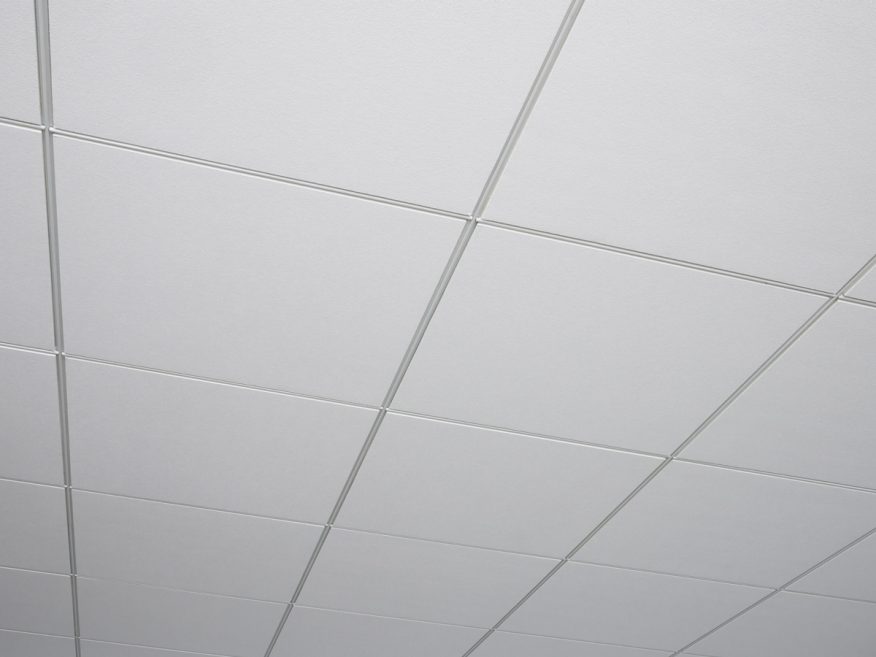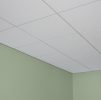Sign In
You're All Set
Welcome back! You are now signed in.
You have been logged out
You have been logged out due to inactivity
Forgot Password
Please enter the email address you used to create the account. We'll send you a link that lets you create a new password.
You're All Set
Please check your email. Click the link in the email to create a new password.
Reset Password
You're All Set
Success! Your password has been updated.
Change Password
You're All Set
Success! Your password has been updated.






Halcyon™ Acoustical Panels
Fine-textured panels with exeptional noise reduction for open-plan offices. Nondirectional, monolithic visual reduces installation time and waste.






Overview
Overview
Fine-textured Halcyon™ Acoustical Panels provide exceptional acoustical absorption and are built to last. Halcyon™ Acoustical Panels are mold- and sag-resistant. Easy to install and clean, their noise reduction properties and high light reflectance values make these tiles perfect for open office plans as well as reception and lobby areas.
Sound Absorption
0.95 NRC
Sound Attenuation
20 CAC
Light Reflectance
Up To 0.90
Recycled Content
40 %
Main Features
Halcyon™ Acoustical Panels are easy to maintain, and the foil backing on selected panels acts as a sound barrier that resists "breathing" (air passing through the surface), allowing them to stay cleaner longer. Additionally, these panels feature Inherent Performance which means that due to the fiberglass substrate these panels inherently resist the growth of mold and mildew.- Exceptional noise reduction with NRC values up to 1.00 and AC values up to 200 for open–plan offices.
- High light reflective finish (LR-0.90) reduced light fixtures and energy use.
- Washable and scrubbable finish.
- Impact and scratch resistant.
- Coordinates visually with Mars™ Acoustical Panels for open/closed-plan applications.
- Compatible with Logix™ Integrated Ceiling Systems.
- Nondirectional, monolithic visual reduces installation time and waste.
- ClimaPlus™ 30-year lifetime system warranty against visible sag, mold and mildew.
- Balanced Acoustics. High NRC & High CAC with backer options.
- High postconsumer recycled content. Up to 42%.
Applications
- Convention and Meeting Rooms
- Department Stores and Boutiques
- Executive Areas, Conference Areas and Board Rooms
- Galleries and Exhibit Spaces
- Lobbies and Reception Areas
- Mall Interior Spaces
- Media Centers, Music Rooms and Libraries
- Open Plan Offices
Specifications
Performance
- Sound Absorption (NRC) 0.95
- Sound Attenuation (CAC) 20
- Light Reflectance 0.90
- Mold & Mildew Resistance Yes
-
Fire Resistance
- Fire Rating Class A
-
ASTM E1264
- astm-e1264-class XII: Glass fiber base with membrane-faced overlay, E: Lightly textured; G: Smooth, Form 2: Water-Felted
-
ASTM E84
- Flame Spread 25 or less
- Smoke Developed 50 or less
- Fire Rating Class A
Sustainability
- Recycled Content 40%
Physical Data
- Thickness (in.) 1
- Color White
- Edge Fineline
- Panel Size 2 ft. x 8 ft.
- Material Fiberglass
Warranty
-
Warranty
USG Ceilings Commercial Application Warranty (English) - SC2102PDF 148 KB
Installation
Installation Guide PDF 822.1 KB
USG Ceilings Portfolio Series: Episode 1 - Installation & Edge Style
USG Ceilings Portfolio Series: Episode 2 - Performance Features
USG Ceilings Portfolio Series: Episode 3 - USG Panel Types
Documents & Files
Data Sheets & Specifications
| Data/Submittal Sheet (English) | |
| Architectural Specification (English) | DOCX 73.7 KB |
Catalogs & Brochures
| System Catalog (English) | PDF 47.2 MB |
Design Files
| CAD and Revit Files (English) |
Installation & Technical Manuals
| Technical Guide (English) | |
| Installation Guide (English) | PDF 822.1 KB |
SDS, Certifications & Reports
| SDS (English) | PDF 161.1 KB |
| SDS (Spanish) | PDF 180.1 KB |
| Certificates (English) | PDF 1.1 MB |
Warranties
| Warranties (English) | PDF 147.7 KB |
Sustainability
| HPD (English) |
| EPD (English) |
Ask a question
Our customer support team will get back to you as soon as possible.
Question Guidlines
- Questions should relate to this product specifically.
- For help with pricing, availability, or delivery, please call 800.874.4968 (Monday–Friday, 7am–6pm Central)
- All questions and answers follow USG’s Terms & Conditions.
- Your question and USG’s answer may be posted to this page in the future, but none of your personal info will be included.
q & a
-
Why is LR important?
When the proper type of lighting fixture is used with a high LR ceiling, there can be savings in both initial construction costs as well as long-term energy costs. The concept is to use the ceiling to reflect light back into the occupied space.
-
Why is NRC important?
NRC is very important in open office plan environments where there are few full height walls to help absorb or block sound.
-
What does ClimaPlus™ mean?
USG’s line of products with ClimaPlus™ Performance have additional resistance to temperature and humidity. This in turn provides additional resistance to sagging and warping of the ceiling panels.
-
What does LR stand for?
LR stands for light reflectance. It is a measure of the percentage of light which is reflected off of a given panel surface. Typically, the whiter and smoother the ceiling panel, the higher the LR value.
-
What is NRC?
NRC stands for Noise Reduction Coefficient. It is a measure of how much sound is absorbed by a given material. It is listed as a decimal and relates to percentage sound absorbed.
-
When referring to ceiling panels, what is the meaning of type, form and pattern?
These categories refer to ASTM Test E 1264.
Type refers to the base material of the panel.
Form refers to the manufacturing process of the panel.
Pattern refers to the type of texture or pattern in the panel. -
What is the difference between Class A and Firecode® branded materials?
Class A signifies that a panel attained a flame spread index of 25 or less (based on 100 for untreated red oak) when tested in accordance with the Standard ASTM E 84. The Firecode® brand signifies that the panel has been classified as a protective membrane in a floor-ceiling or roof-ceiling assembly in accordance with the Standard ASTM E 119. All Firecode® protective membranes offered by USG have attained a Class A rating.
-
How many acoustical panel types does USG offer?
USG offers four major types of acoustical panels as well as Gypsum based panels for special applications. They are: Wet-Felted, Cast, "X" Technology and Fiberglass.
-
What is the best way to cut a reveal in a ceiling panel?
The best way to cut a reveal edge in a panel is with a utility knife or a special Reveal edge tool.
-
How far in advance can I order ceiling panel before installation?
Storage time of materials at the job site should be as short as possible, and environmental conditions should be as near as possible to those specified for occupancy. Excess humidity during storage can cause expansion of material and possible warp, sag, or poor fit after installation. Chemical changes in the mat and/or coatings can be aggravated by excess humidity and cause discoloration during storage, even in unopened cartons. Cartons should be removed from pallets and stringers to prevent distortion of material. Long-term (6-12 months) storage under uncontrolled environmental conditions should be avoided.
-
What is the minimum NRC recommended for open office plan environments?
It is best to use a minimum of .70 NRC and up to .80 - .90 NRC panel for this type of application.
-
What is CAC?
CAC stands for Ceiling Attenuation Class. It is the measure of the blocking of sound through one ceiling plane, into the plenum above, and back through the other ceiling plane to an adjacent space.
-
Why would I use one ceiling panel type over another?
The different panel substrates provide panels with unique characteristics. The use of the different panels will vary based on specific needs and application.
-
Have a question?
Ask USGLet us do the research. We'll get back to you as quickly as we can.
-
Need help right away?
Call our Technical Support team at 800-874-4968 (Monday-Friday, 7:30 am - 4 pm Central).



